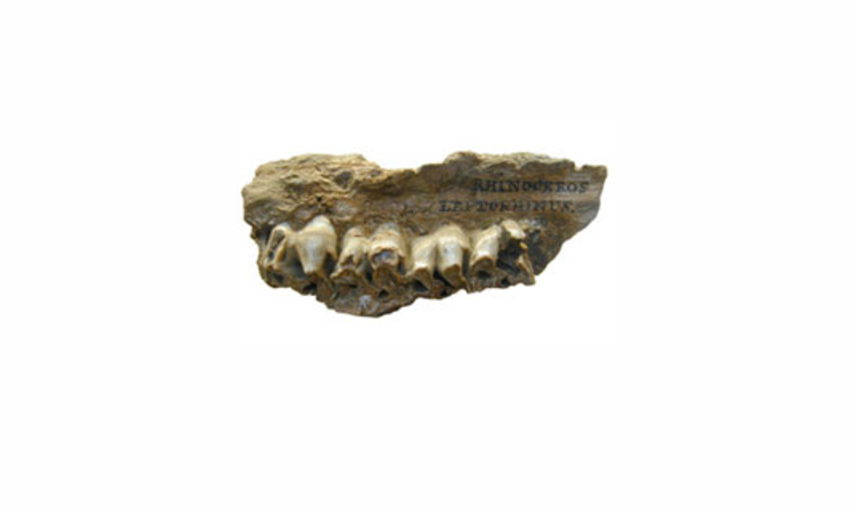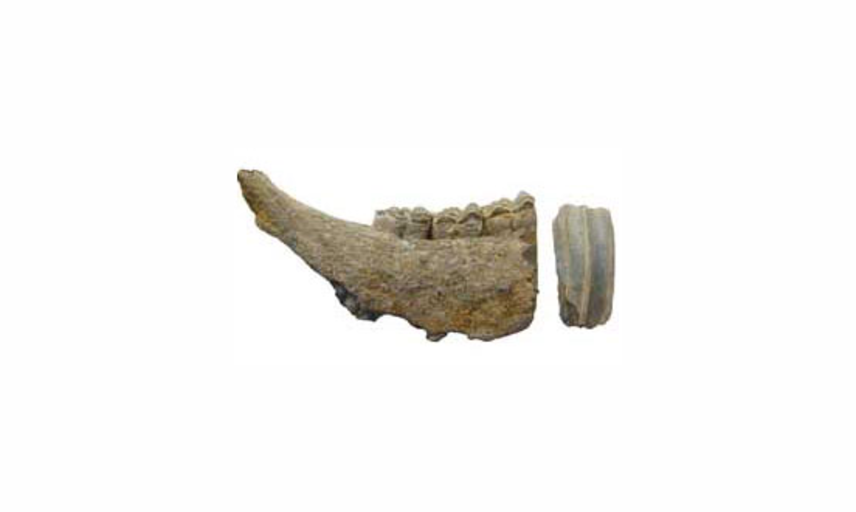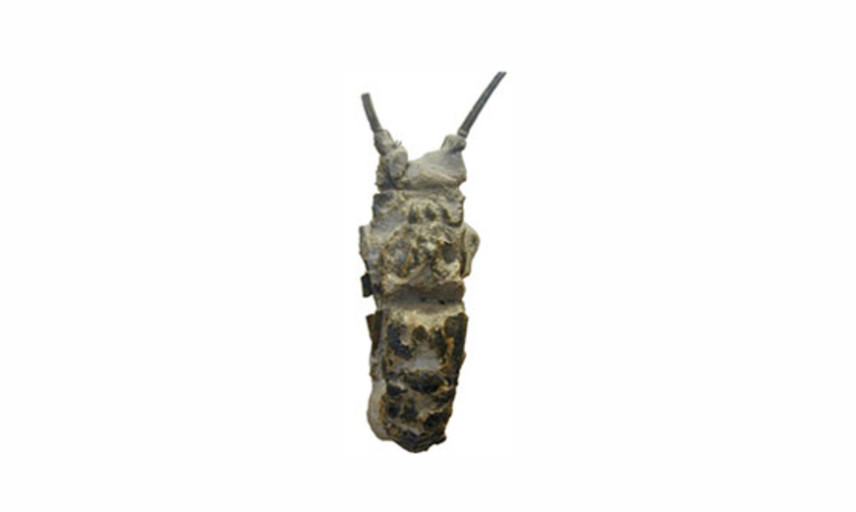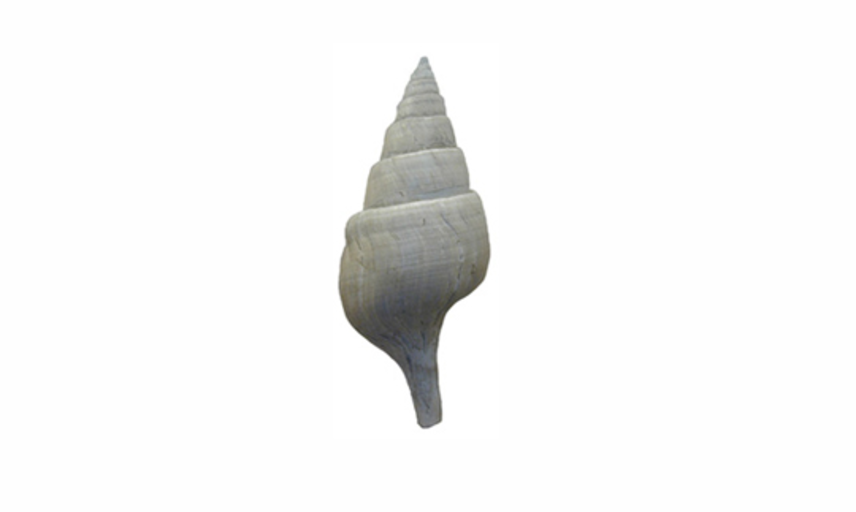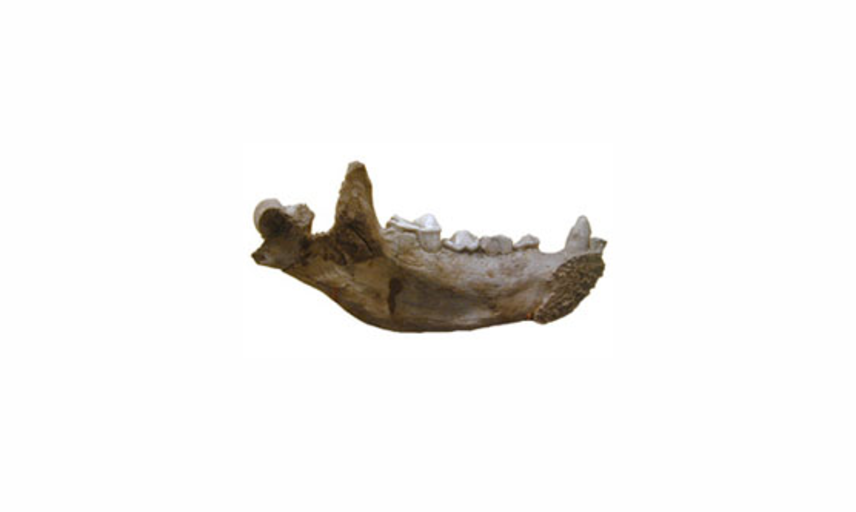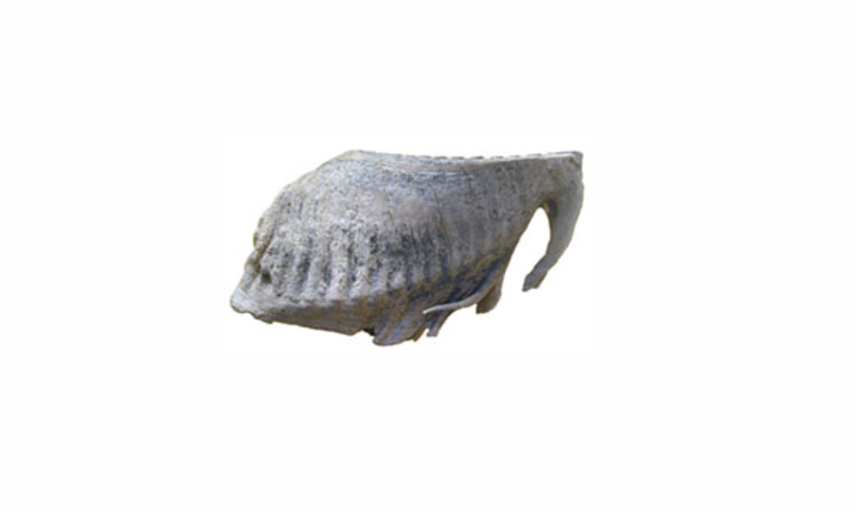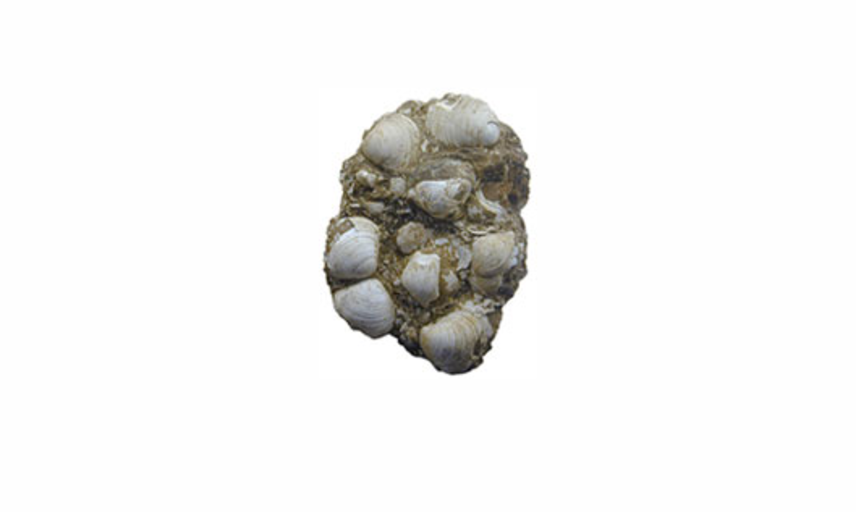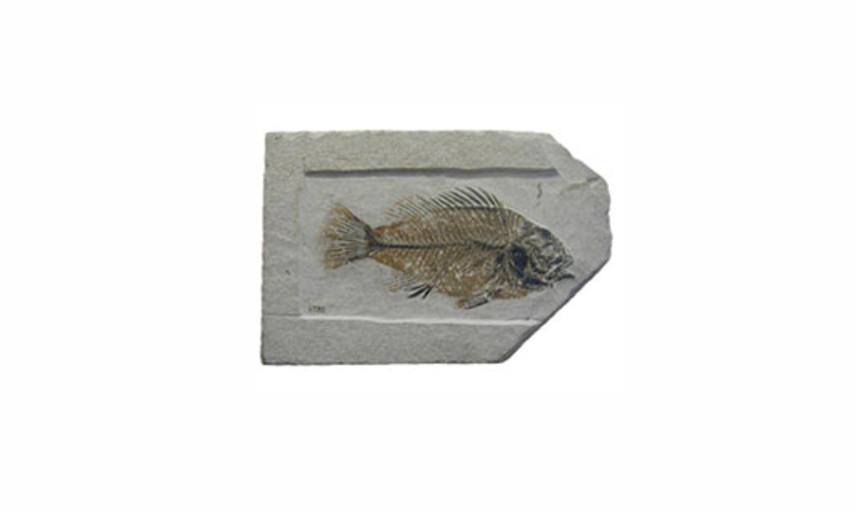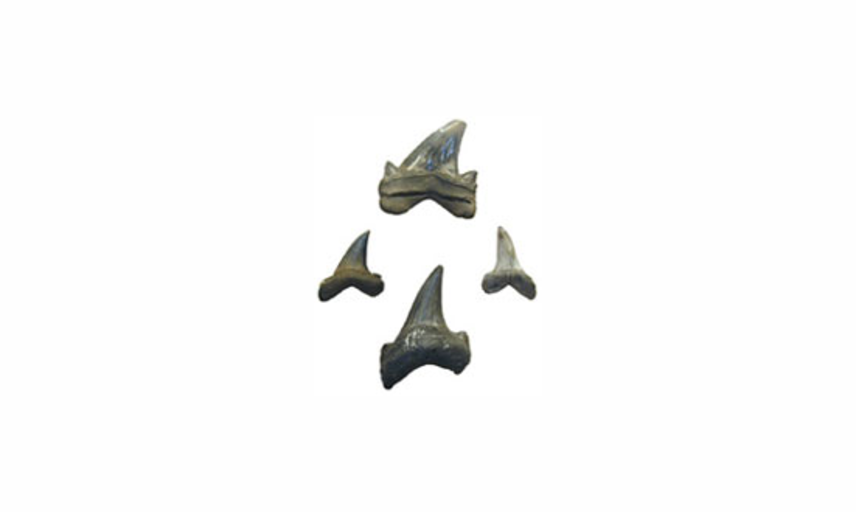The Caenozoic
When: 65 million years ago to 10,000 years ago.
Animals: Mammals and birds become common. Animals that are familiar to us today begin to appear. During the last part of this era, humans begin to live alongside mammoths, bison, lions and bears.
Plants: The plants of forests and grasslands become similar to those we see today.
Firsts: Primates (humans, apes and monkeys) and many other mammals appear.
Lasts: Some groups like mammoths died out towards the end of this period, but as you can see from similar animals and plants alive today, many have survived.
Notes: Ice ages were common in the the last part of this era - animals and plants had to adapt to these conditions.
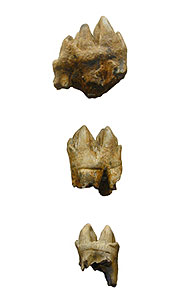
These are the teeth of a hippopotamus. They were found in Tuscany in Italy and are about one and a half million years old.
It was around this time that animals like the rhinoceros and the hippopotamus lived alongside bears, mammoths, hyenas, and wild horses in England and other parts of Europe.
Do you know what these fossils are?
About this resource
Science topic: Fossils, Rocks, Evolution
Key Stage: KS2
Type: Information, Activity
Keywords: Caenozoic, ice age, mammoths, Caenozoic Fossils

